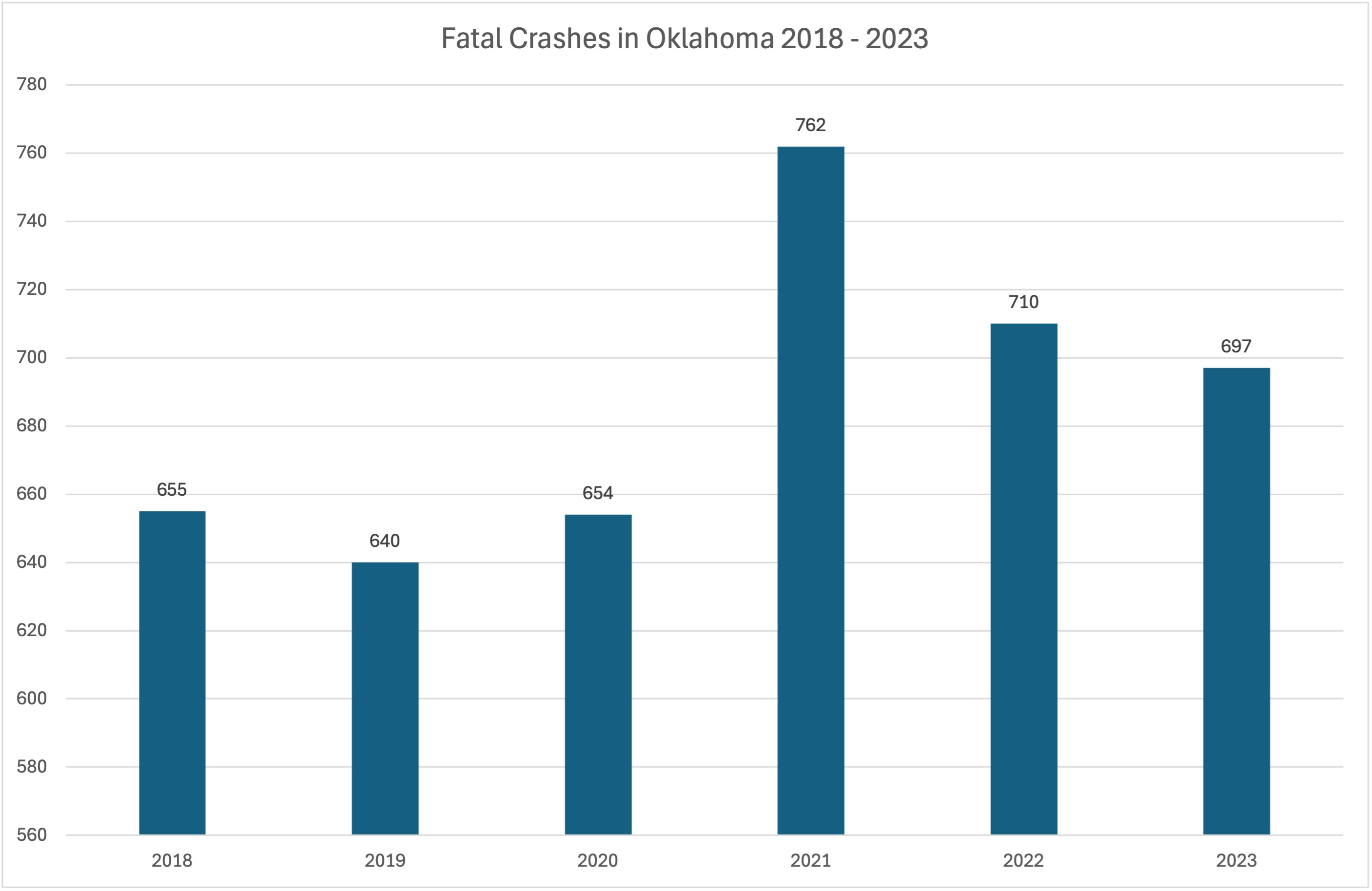First, we wish to express our sincere sympathy if you lost a close family member in a car, truck, motorcycle, or bicycle accident in Oklahoma City. At Warhawk Legal, our Oklahoma City car accident attorneys have a great deal of experience helping people recover compensation for fatal accidents and those resulting in serious injuries.
If our lawyers represent you in a Oklahoma City wrongful death claim, our concern will be to identify liable parties and help you pursue maximum compensation. It will not be a simple process, but we will be there with you for the long haul if we become your personal injury recovery team.
Which Oklahoma Roads Are The Deadliest?
Each year, thousands of Oklahomans are injured or die on Oklahoma roads. In fact, car accidents are among the leading causes of death in Oklahoma. We looked at data from the National Highway Traffic Safety Administration’s Fatality Analysis Reporting System (FARS) for the years 2018 -2022 to find where fatal crashes occur and how many. We also used the NHTSA Early Estimate of Motor Vehicle Traffic Fatalities in 2023 to determine the number of Oklahoma traffic deaths. This is important information for Oklahoma drivers to know so they can exercise extra caution when driving on these roads. These include the following:
- Northeast 23rd Street, which is also U.S. Highway 62, from North Highland Drive to North Midwest Boulevard in Oklahoma City and Midwest City.
- Crosstown Expressway, another name for I-40 between South MacArthur to Exit 148C in Oklahoma City
- I-35 from Exit 124B to Exit 130 in Oklahoma City
- I-40 from Exit 155B to Exit 123 in El Reno
- I-40 from Exit 155B to Exit 159B in Oklahoma City, Midwest City and Del City
- I-40 from Exit 104 to North 2560 Road in Hinton
- I-44 from Exit 224 to Exit 222B in Tulsa
- Oklahoma State Highway 3 (S.H. 3) from East Drive to Springbrook Drive in Oklahoma City
- S.R. 4 from Southwest 24th Street to East Southwest 89th Street in Oklahoma City and Mustang
- U.S. Highway 377 from Cameron Drive to EW125.5 Road in Seminole
Each recorded fatality means a life was lost and a family was changed forever. If your spouse, parent or child died in a crash and we take the case, then we will use every relevant detail to help build an effective wrongful death claim for you.
Deadliest Road in Oklahoma City
The deadliest stretch of road in Oklahoma City is on Northeast 23rd Street, which is also U.S. Highway 62. This zone of concentrated accidents is between North Highland Drive to North Midwest Blvd and is approximately 5 miles long. This stretch saw 16 fatal accidents and 19 deaths between 2018 and 2022. A combination of factors such as speeding, distracted driving, drowsy driving, and drunk driving is likely why this road see’s more concentrated levels of fatal crashes. This area may also get particularly congested and have higher traffic levels than other roads.
Northeast 23rd Street Accidents (2018-2022)

Fatal Car Accident Statistics in Oklahoma
From 2018 to 2023, there were 4,118 fatalities on Oklahoma roads. In 2021, after the pandemic, fatal accident rates went up 16.5% in Oklahoma and have not come back down to pre-COVID levels. Below is a graph showing fatal accidents in Oklahoma from 2018-2023.

*Data from 2023 is an estimate made by the National Highway Traffic Safety Administration (NHTSA)
Contact An Oklahoma City Car Accident Attorney Today
As personal injury attorneys in Oklahoma City, we know how painful it can be to think about taking legal action. However, we would encourage you to let us start evaluating your loved one’s car or Oklahoma City truck accident claim as soon as possible. We have much experience and know how to stay out of a family’s way during the funeral and burial time frame. We pledge to be sensitive as we get your wrongful death case started.
To schedule a free consultation, call Warhawk Legal in Oklahoma City at 405-397-1717 or send an email inquiry. We are wrongful death lawyers who work with clients across the metro and statewide.